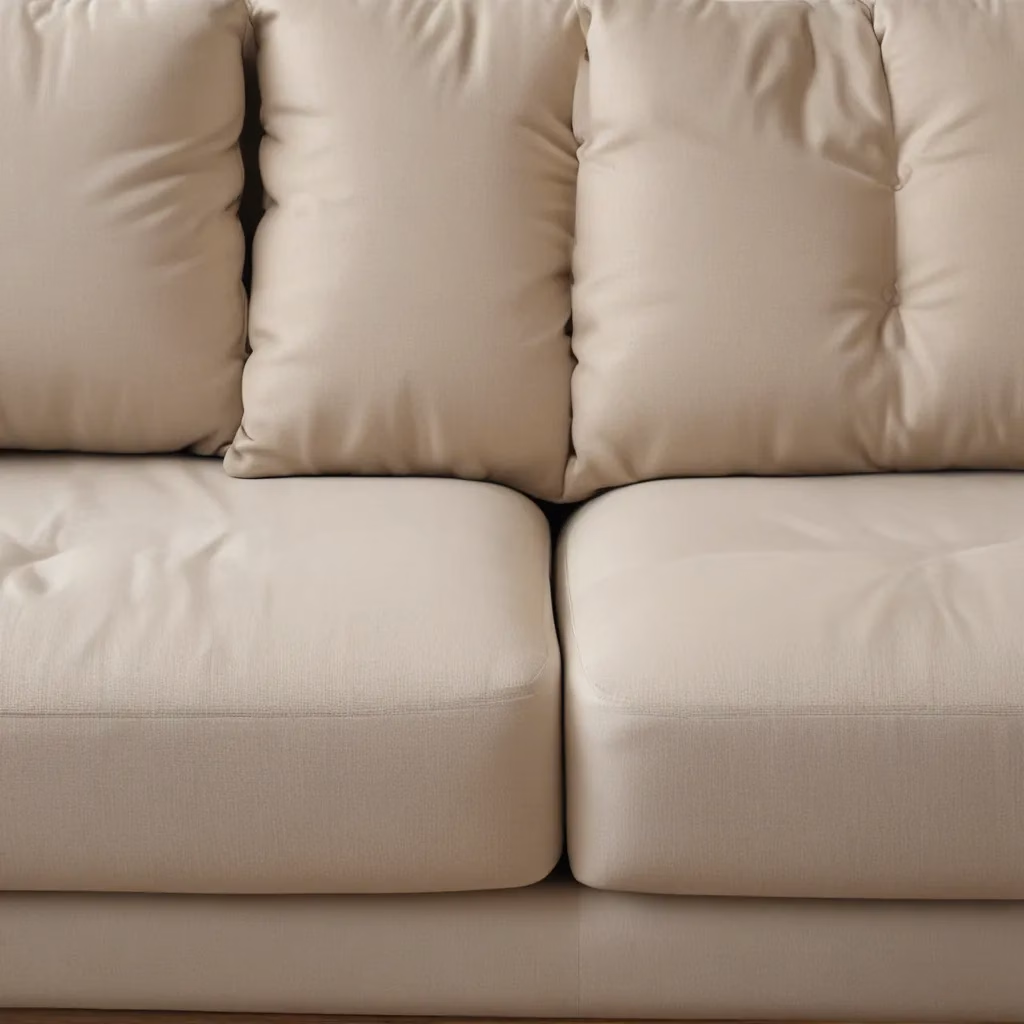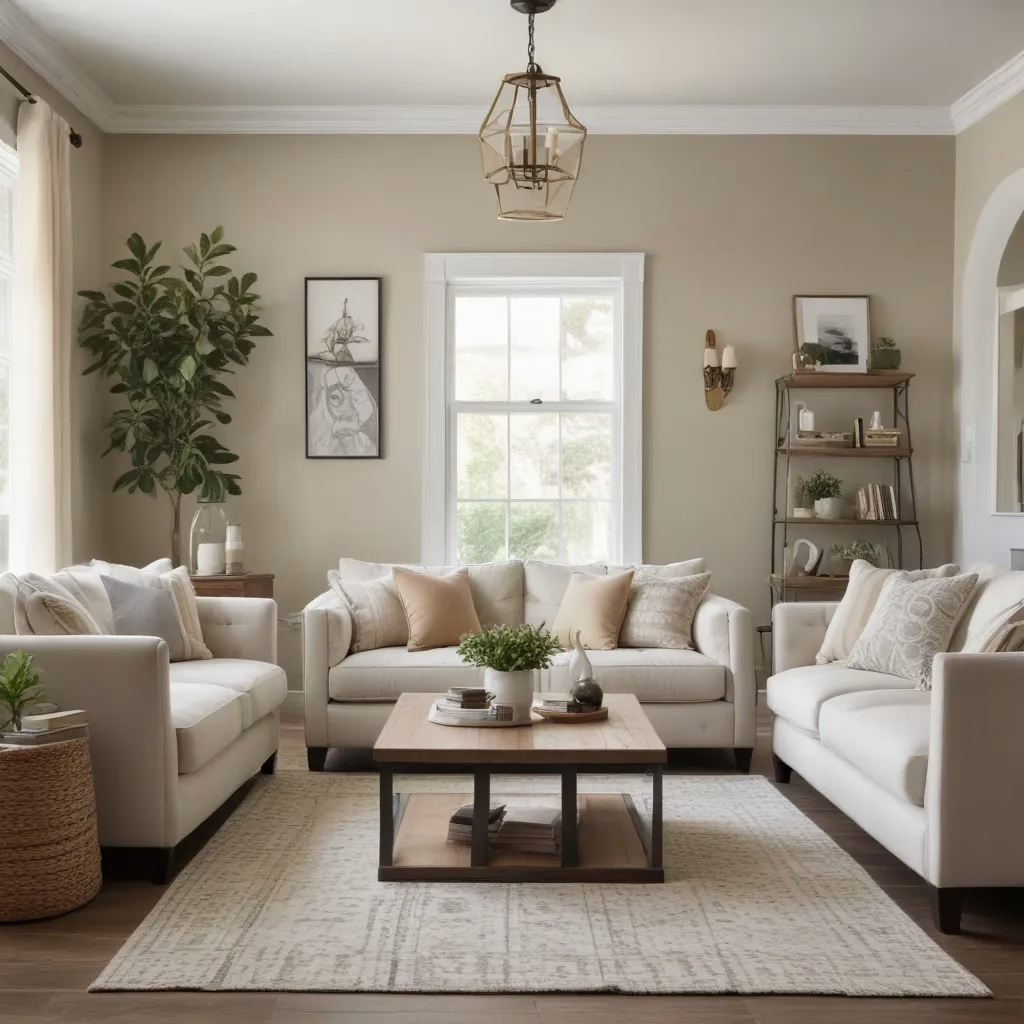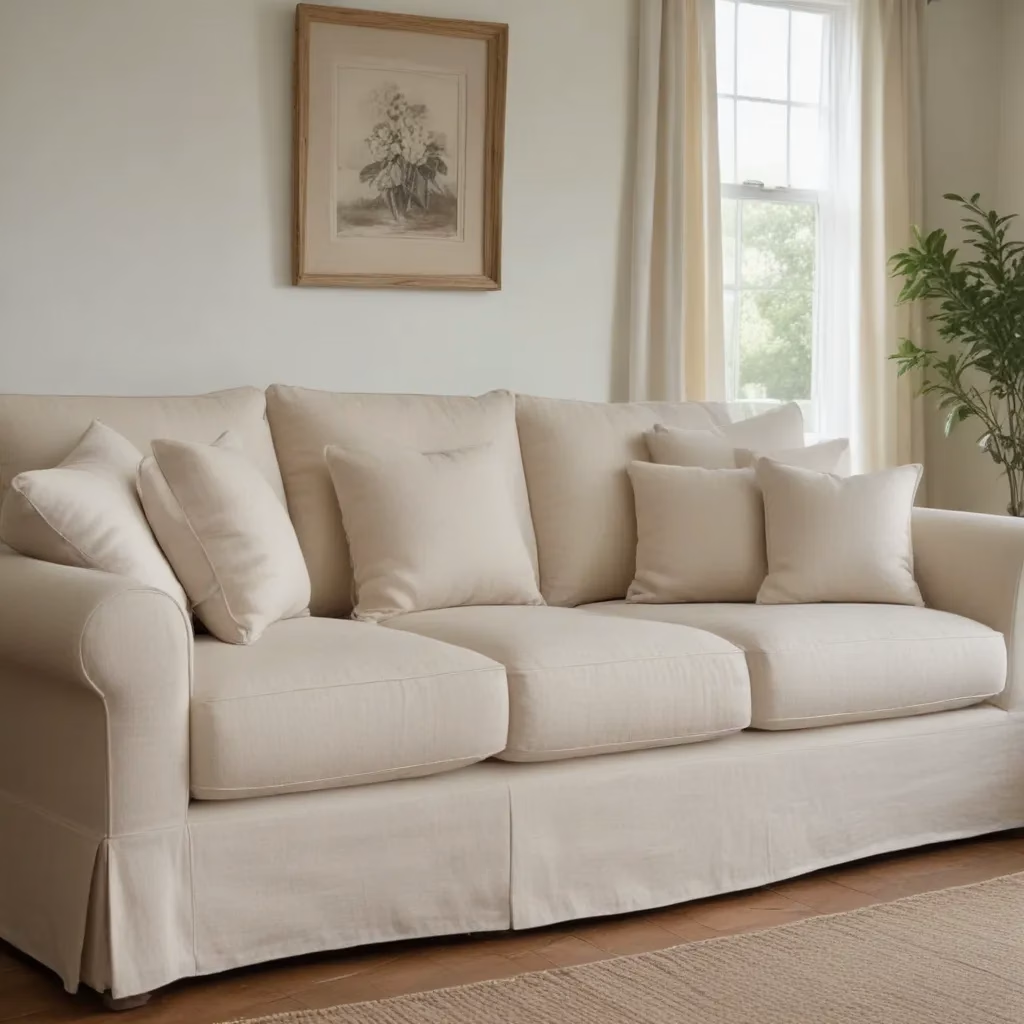
Maintaining Sofa Upholstery: Addressing Stains, Odours, and Wear
As an experienced furniture consultant and interior design writer, I understand the importance of preserving the beauty and longevity of your sofa. Sofas are often the centrepiece of a living room, setting the tone for the entire space. But with daily use and the occasional spill or accident, their upholstery can quickly become compromised if not properly cared for.
Now, this might seem counterintuitive…
In this comprehensive guide, I’ll share expert tips and strategies for maintaining your sofa’s upholstery, addressing common issues like stains, odours, and general wear and tear. Whether you’ve invested in a high-end designer piece or a more budget-friendly option, these techniques will help you keep your sofa looking its best for years to come.
Fabric and Upholstery Selection
The first step in maintaining your sofa’s upholstery is choosing the right fabric from the start. Not all upholstery materials are created equal when it comes to durability and ease of cleaning.
Microfiber is a popular choice for its stain resistance and easy cleanup. The tightly woven fibers resist absorbing liquids, making it a practical option for high-traffic areas. Leather is another durable option that develops a rich patina over time, though it requires more specialized care. Velvet and chenille offer a luxurious, velvety feel, but can be more challenging to keep clean.
When selecting your sofa fabric, also consider the care instructions. Look for pieces labeled “W” (water-based cleaning), “S” (solvent-based cleaning), or “S-W” (either water-based or solvent-based cleaning) for the most flexibility. Fabrics marked “X” can only be vacuumed or lightly brushed, limiting your options for dealing with stains and odours.
Living Room Layout Tips
The layout of your living room can also impact the wear and tear on your sofa’s upholstery. Arrange your furniture to optimize traffic flow and minimise direct contact with high-traffic areas.
Position your sofa away from doorways, windows, and other high-traffic zones to reduce exposure to dirt, dust, and accidental spills. Incorporate strategic placement of side tables, ottomans, and other furnishings to create a balanced, cohesive look while also protecting your sofa.
When arranging your living room, consider the scale and proportion of your sofa in relation to the other pieces. An oversized or under-scaled sofa can throw off the visual harmony of the space, making it appear cluttered or unbalanced. Aim for a sofa that complements the room’s dimensions without dominating the area.
Sofa Cleaning & Maintenance
Regular cleaning is essential for preserving your sofa’s upholstery. Frequent vacuuming helps remove surface dirt, dust, and debris that can wear down the fabric over time. Use the upholstery attachment on your vacuum cleaner and gently go over the entire surface, paying special attention to crevices and corners.
For more thorough cleanings, refer to the care instructions on your sofa’s tag. Water-based cleaners (marked “W”) can be used with a mild detergent solution, while solvent-based cleaners (marked “S”) require the use of a dry-cleaning solvent. Always test any cleaning solutions in an inconspicuous area first to double-check that they don’t cause discoloration or damage.
When dealing with stains, it’s important to act quickly. Blot the affected area with a clean, absorbent cloth to remove as much of the spill as possible before it sets. Depending on the type of stain, you can try a variety of household solutions, such as:
- Detergent solution: 1 tsp clear dish soap in 1 cup warm water
- Vinegar solution: 1/3 cup white vinegar in 2/3 cup water
- Ammonia solution: 1 tbsp clear ammonia in 1/2 cup water
Gently dab the stain with the appropriate solution, being careful not to rub or scrub, as this can spread the stain. Rinse the area thoroughly with clean water and pat dry.
For persistent odours, sprinkle baking soda over the affected area, let it sit for 10-15 minutes, then vacuum it up. The baking soda will help absorb and neutralize unpleasant smells.
In between deep cleanings, consider using a furniture polish or protectant to help maintain the upholstery’s appearance and repel future spills. Always follow the manufacturer’s instructions and test the product in an inconspicuous area first.
Styling for Comfort & Aesthetics
While maintaining the structural integrity of your sofa’s upholstery is crucial, you can also enhance its comfort and visual appeal through strategic styling.
Incorporating plush throw pillows and cozy blankets can add an extra layer of cushioning and warmth to your sofa. Choose fabrics and patterns that complement the existing upholstery, or mix and match textures for visual interest.
To update the look of your sofa without a full reupholstery, consider investing in a removable slipcover. These versatile covers come in a wide range of colours and patterns, allowing you to refresh the appearance of your furniture seasonally or as your style evolves.
For a more permanent transformation, professional reupholstery services can breathe new life into an older sofa. This option allows you to select a completely new fabric that aligns with your current design aesthetic, while also addressing any structural or cushion issues.
Furniture Buying Guides
When shopping for a new sofa, it’s important to consider not only the visual appeal but also the construction and materials that will impact its long-term durability and maintenance.
Look for a sturdy, well-built frame that can withstand regular use. Quality hardwood frames, such as oak or maple, are more likely to last for years compared to cheaper, easily warped alternatives. double-check that the sofa’s joints are securely dowelled, stapled, or glued for added stability.
The upholstery and cushions also play a crucial role in a sofa’s longevity. High-density foam or premium down-filled cushions will hold their shape and comfort level better over time than lower-quality options that may flatten or sag prematurely.
When evaluating sofa options, pay close attention to the fabric’s cleanability rating (W, S, S-W, or X) and choose a material that aligns with your lifestyle and cleaning preferences. Stain-resistant and easy-to-clean fabrics, such as microfiber or leather, can make maintaining your investment much more manageable.
Measure your living space carefully to double-check that the sofa’s dimensions accommodate your room’s layout without overwhelming the area. Leave ample clearance for traffic flow and double-check that the scale of the piece harmonizes with your other furnishings.
Ultimately, investing in a well-constructed, high-quality sofa from a reputable brand can save you time, money, and headaches in the long run. By prioritizing durability and maintenance from the start, you can enjoy your new piece of furniture for many years to come.
No matter the style or material of your sofa, proper care and maintenance are essential for preserving its beauty, comfort, and longevity. By following the tips outlined in this guide, you can keep your living room’s centrepiece looking and feeling its best for generations to enjoy. For more inspiration and expert advice, be sure to visit SofaSpectacular.co.uk.
Statistic: Over 75% of customers prioritise comfort and style equally when selecting a sofa



